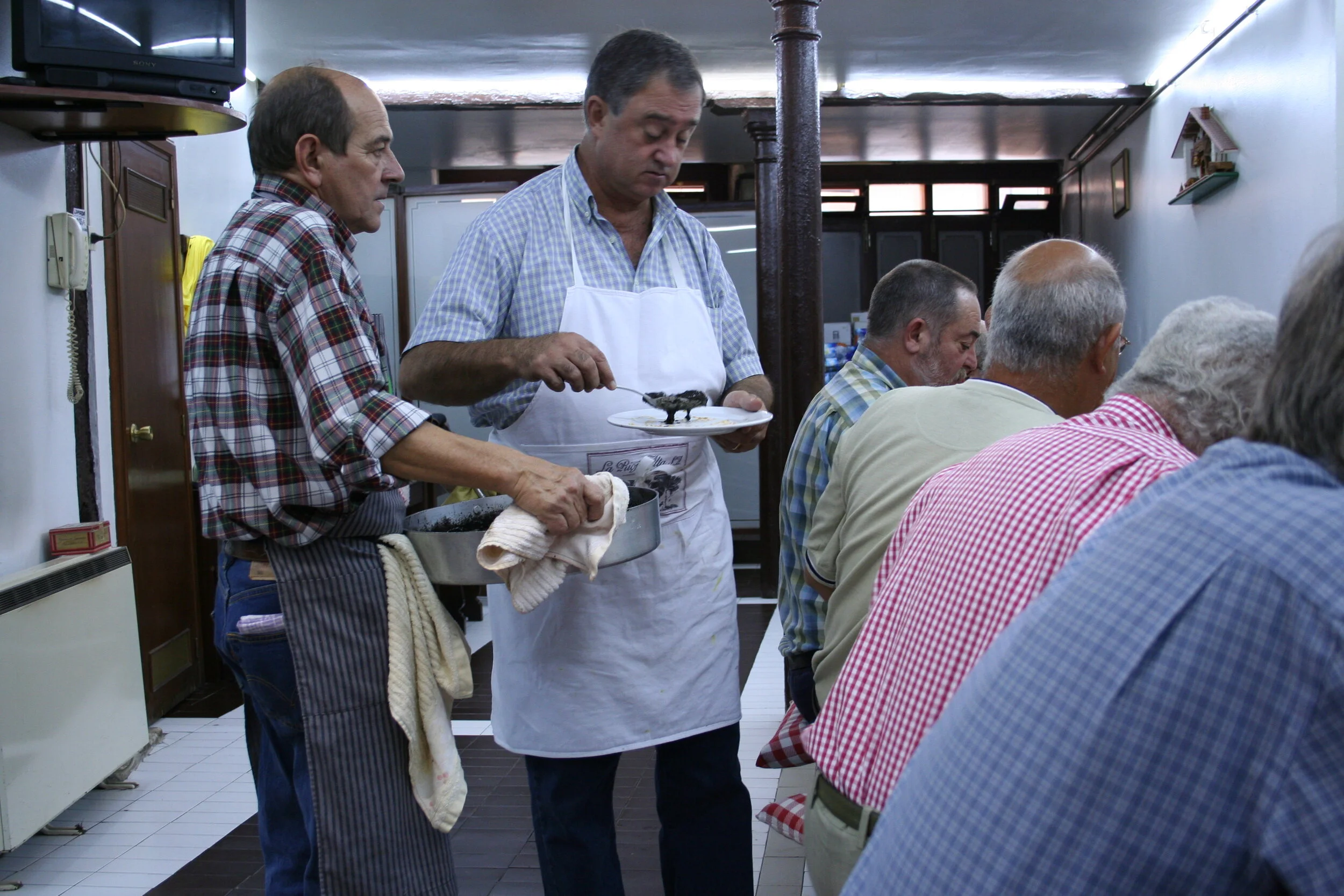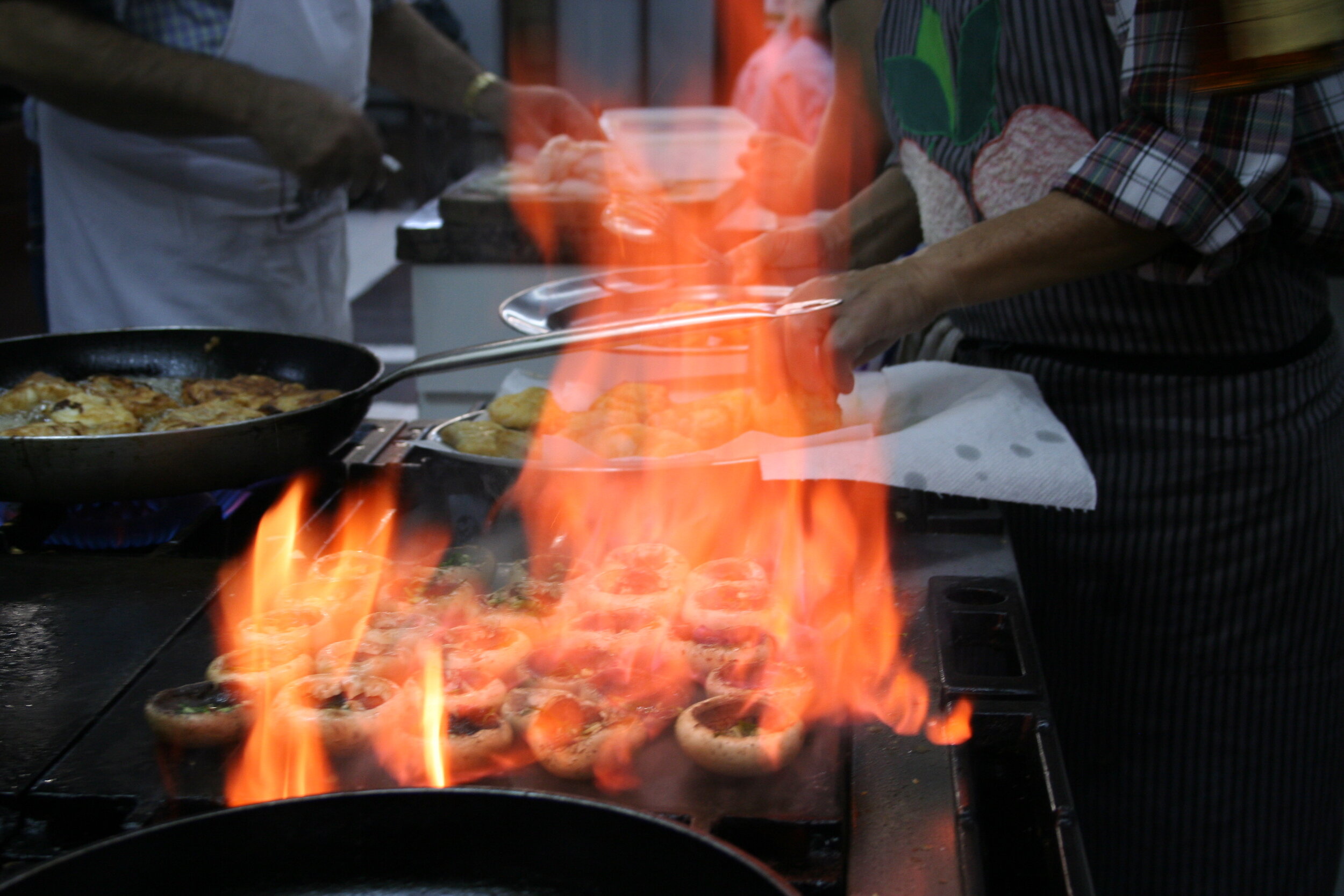
BP Travel Award 2005
Traditionally the exclusive domain of men, the Basque gastronomic societies called txokos originated in 1870 in San Sebastián. They vary in size between fifteen and a hundred members. Groups of these men join together in the kitchen to spend the evening cooking Basque food, talking, drinking and eating - the word txoko means a corner or comfy space. Txokos function as both a practical and a social institution where everyone shares the costs involved, but they equally act as a means for the next generation of men to learn and preserve the long and much lauded tradition of Basque cooking.
I wanted to use the Travel Award to document members from a single txoko and examine how cuisine, politics, identity and tradition intermingle and are developed within such an institution. At a time when, for Basques more than most, the cultural is political, they are anxious to preserve their cuisine along with their language (Euskera is thought by some to be the oldest language in Europe) and their sports, such as pelota.
I did not and do not intend this project as an anthropological study, but rather as an opportunity to exchange and learn from, as well as question, perceived cultural identities - my own as much as those of the txoko members. If I was to learn about Basque food and paint Basque cooks then, in exchange, I would cook for them and introduce them to examples of British food. This of course led to a whole new set of dilemmas and questions: what is authentic British cooking? Does it even exist?
While researching and planning my project I contacted the London Basque Society and over time got to know Kiko Moraiz. Born in San Sebastián, Kiko was invited to join a txoko as a young man but refused because he saw the men-only, members-only policy as both sexist and elitist. When he moved to London over a decade ago he missed the food and set about learning recipes. He now cooks a full four-course Basque meal once a month for fellow Basques there.
I travelled to Bilbao in October 2005 and, by chance, my trip coincided with the year of Basque gastronomy and British food fortnight. I contacted Juan Zabalar, the president of Txoko Mallona, a 40-member txoko in the centre of the old town. This society was set up in the 1940s and is believed to be the second oldest in Viscaya. Over the next month I spent many nights a week meeting, interviewing, eating with and cooking for its members as well as collecting source material for paintings.
Many of the men I met at the txoko and have subsequently painted grew up together under the Franco regime, when Euskera was banned and food was scarce. They are a friendly and generous group of men, many in their sixties, who after around thirty years of cooking in the txoko had become masterful cooks: delicate hake throats in a light batter, monkfish in a rich squid-ink sauce so thick and black it looked like tar, beef steaks served with piquillo pepper and garlic, squid with potatoes. In return I cooked a pork pie and piccalilli to feed twenty, green asparagus with butter (tinned white is more highly prized in the Basque country), chicken curry and roast beef with Yorkshire pudding. But the dish that got them most excited was a simple steamed lemon and orange sponge pudding with custard. It was strange to see such a familiar dish changed through someone else's perspective into something exotic.
I would ask the members for details about specific recipes and what they thought authenticity and traditional Basque food was. Why it was important to them? I also asked them about change in the txoko - would it ever allow women members? Would they always cook just Basque food? How might the next generation approach these traditions? Unintentionally, perhaps, Juan put it best when describing the dilemma of whether to add tomatoes to the tuna, red pepper and potato stew called marmitako: 'Traditionally, no, never, but I do and many people do now. You don't notice it with your eyes but you will in your mouth. Just one, maybe two, chopped up very small, it will improve it. We have an expression here, "what the eyes don't see the heart doesn't feel".'
Portraits from Txoko Mallona
Oil on canvas
various dimensions
2006
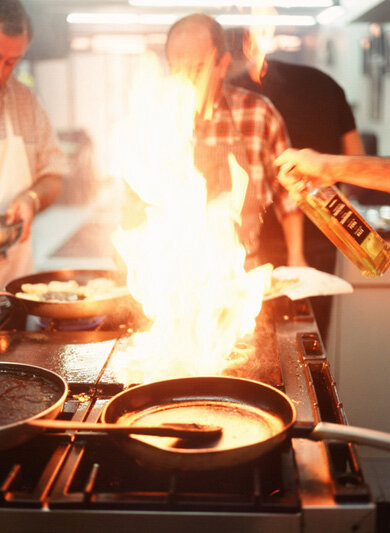

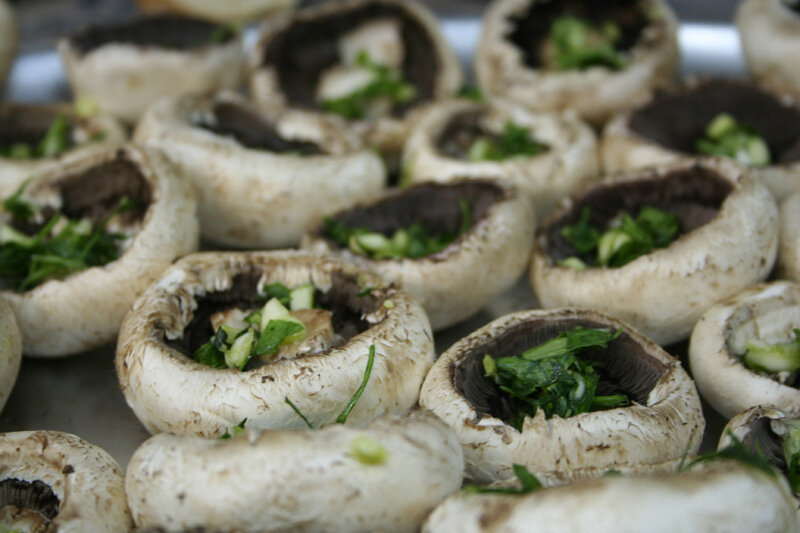
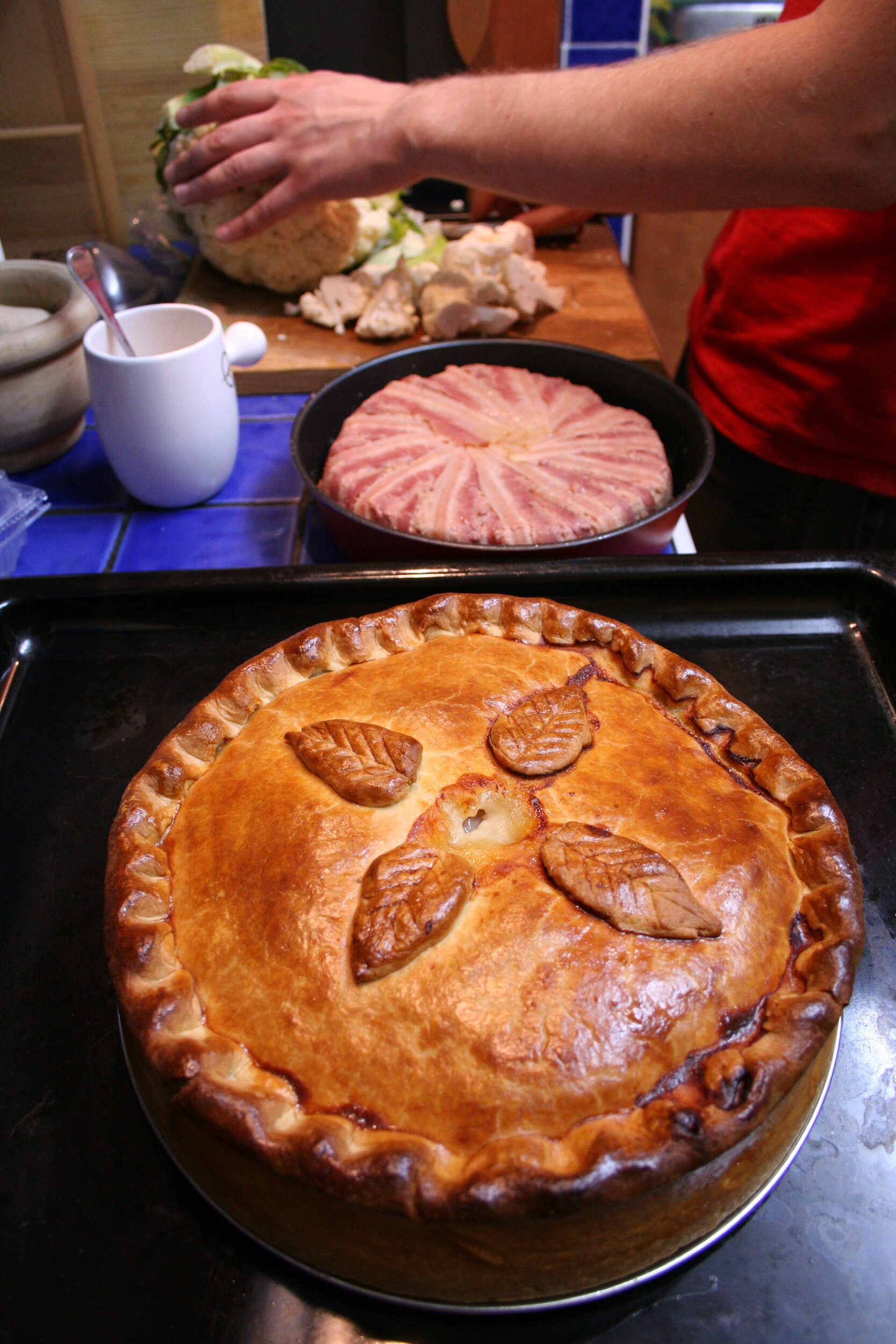
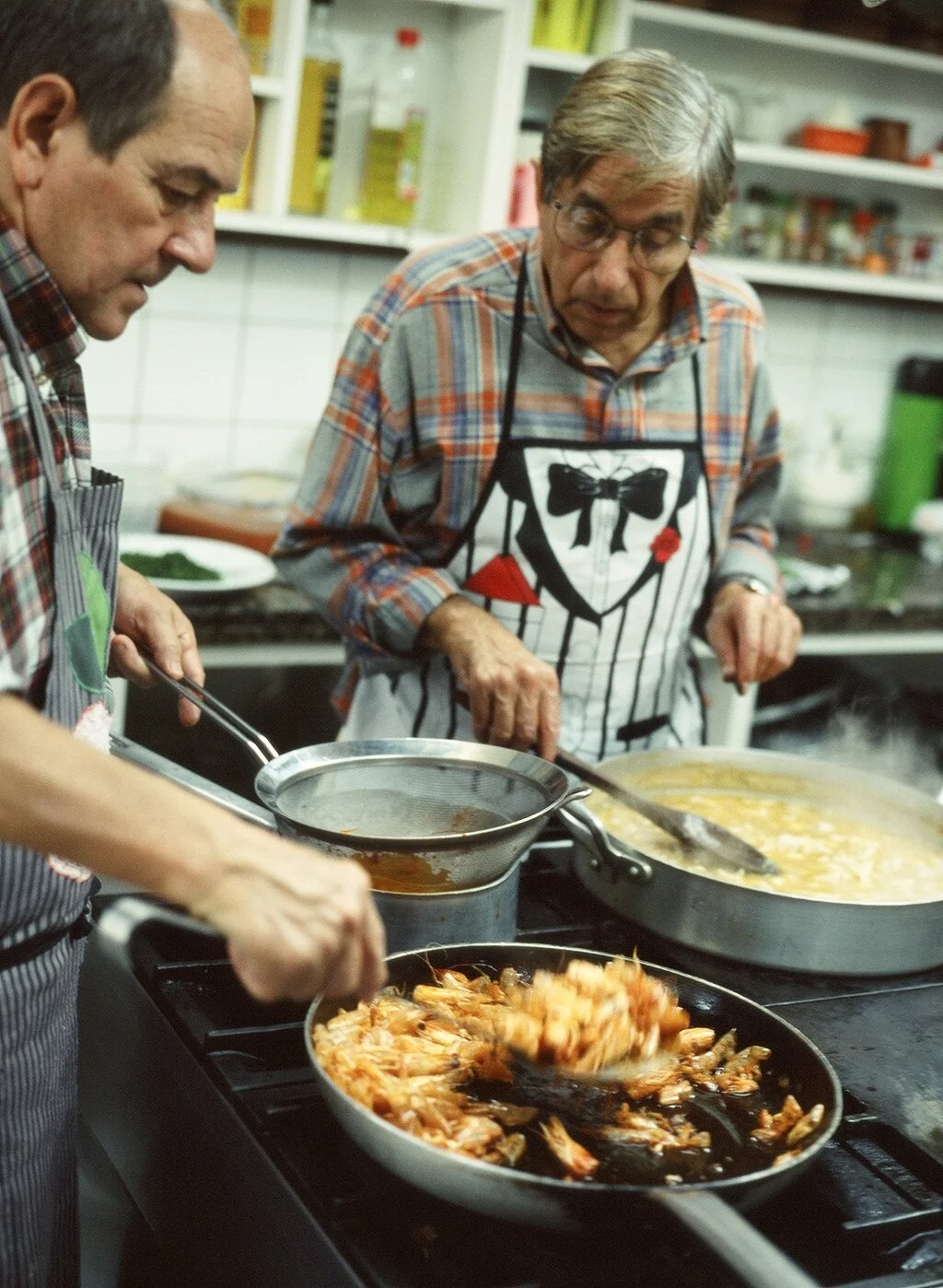
Returning the Paintings 2008
In February 2008 I returned to Txoko Mallona to hand the eight small portraits back to its members. Although the building had been refurbished and some new appliances had been fitted the overall feeling was much the same. On the night I visited two groups were using the space; Juan had invited the members I had portrayed to see the paintings for the first time, the second group was a large party and it was pointed out to me that women made up at least half their number. Later that night one of the younger txoko members pointed out to me that things were changing, he felt the txoko would eventually accept women as members, though could not say when.
Glasses of Txakoli: the young 'green' wine, served as an aperitif , were poured and the smell of cooking salt cod and large prawns filled the air. Txema was cooking for our table and, as it had been during my stay, that meant fillet steak, grilled rare on 'la Plancha' and served with slowly cooked piquillo peppers and garlic, fried poatoes and onions. The food was as ever faultless and as the night progressed, bottles were opened and songs were sung. Although over two years had passed since I had last been to Bilbao I immediately felt at home.
I hope the portraits I have made of the txoko members give them pleasure, that they might act as the start of a larger collection of paintings and photos that can be added to and which over time will eventually build into a visual history of the people who have cooked at the txoko and been part of its continuation and development.









